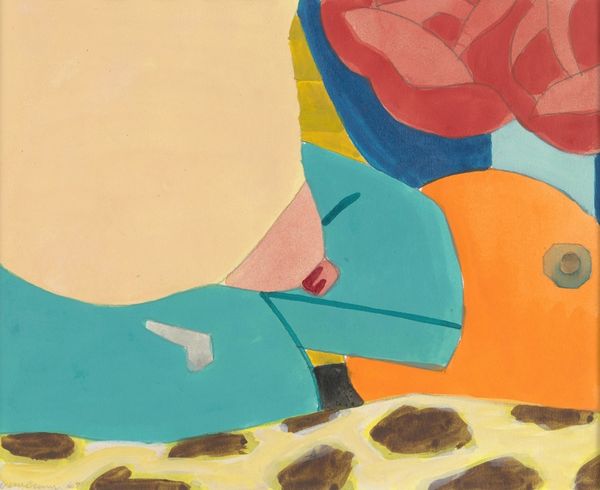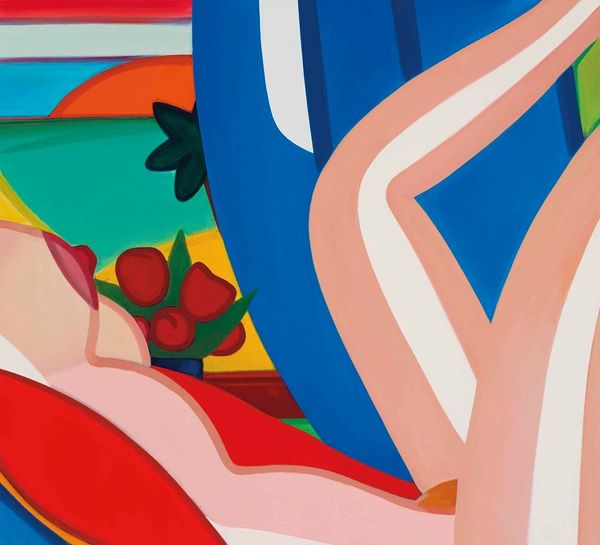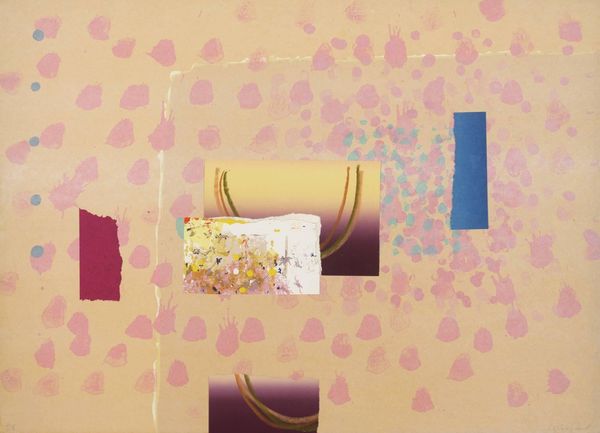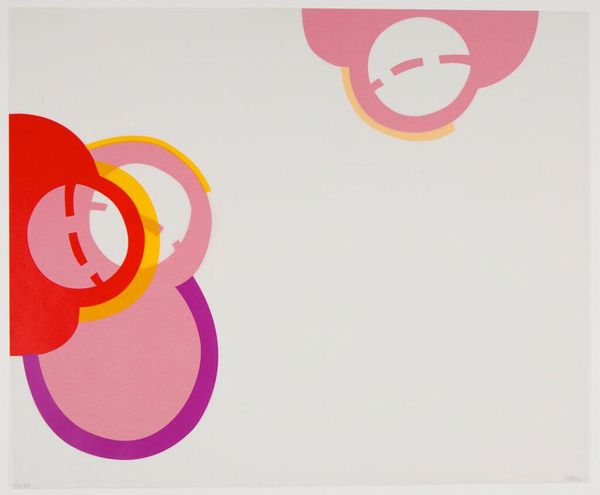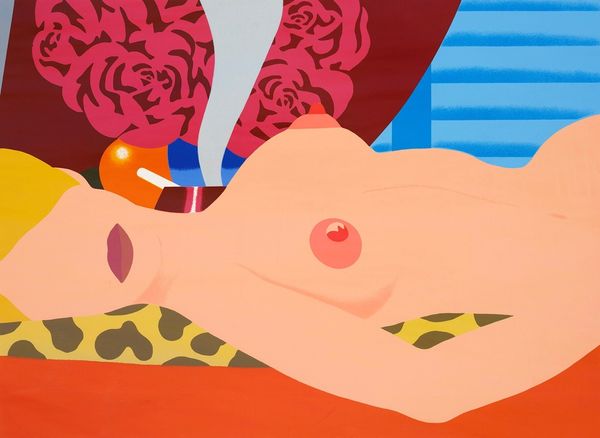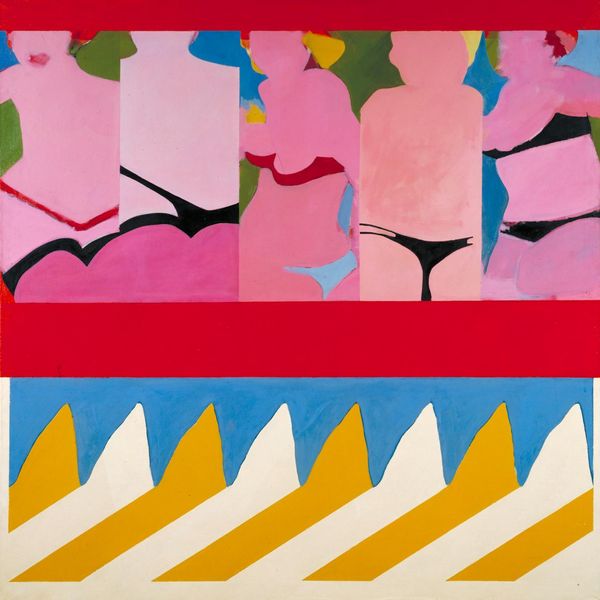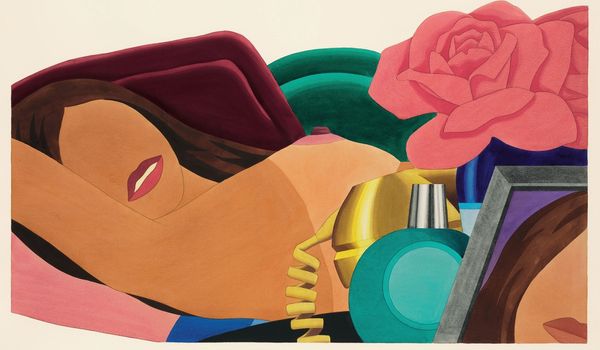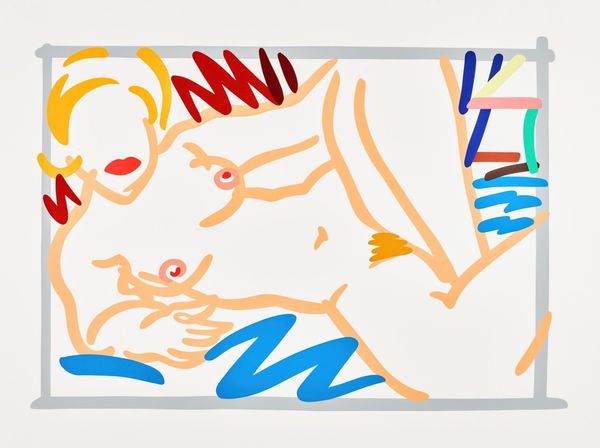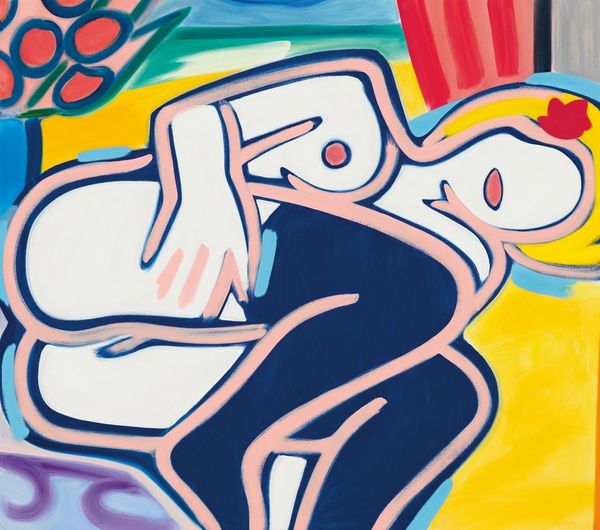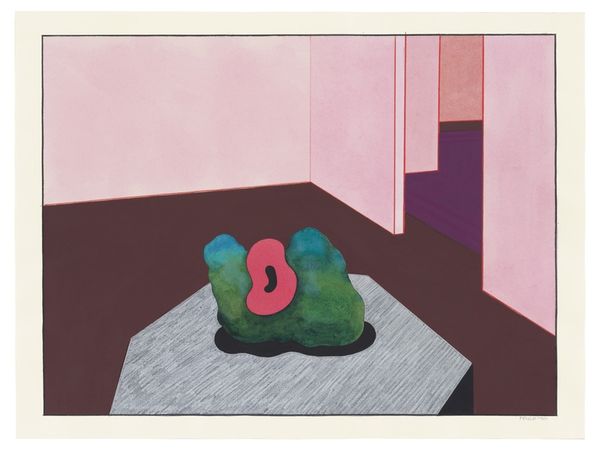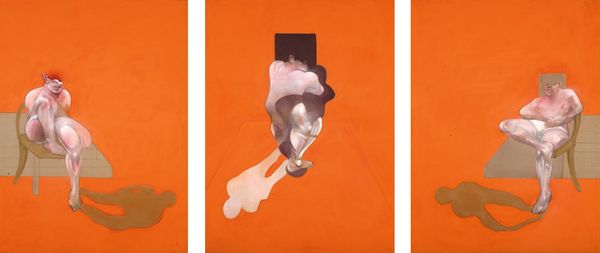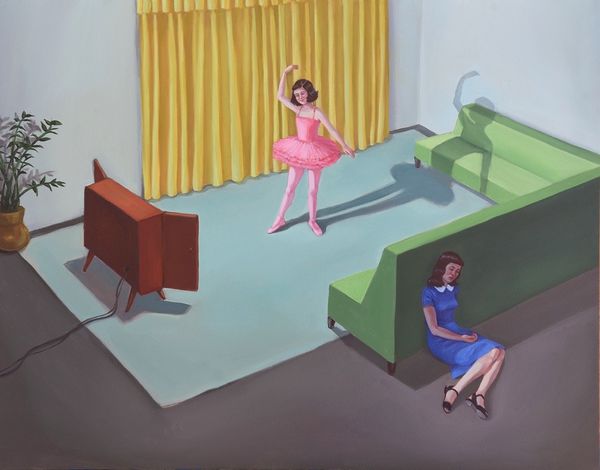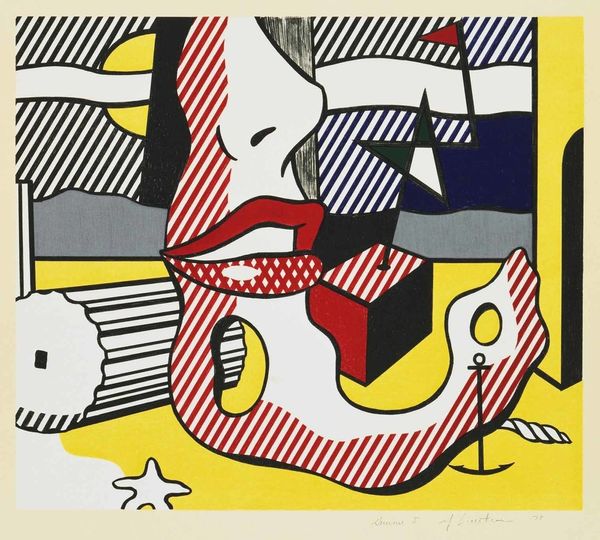
Copyright: Modern Artists: Artvee
Curator: Here we have Tom Wesselmann's "Study for Drop Out Nude," an acrylic painting from 1981. What's your initial read on this piece? Editor: It’s striking. There’s a dreamlike quality; that oversaturated color palette evokes both desire and alienation. Curator: Precisely. The painting fragments the female figure—a signature move for Wesselmann, especially in his exploration of nudes within domestic interiors. Look at the clean lines and blocked colours. The lack of shadow creates flatness. Editor: Yet the pink stocking reads erotically while disrupting the composition. It pushes back against art-historical framings of the passive nude by drawing attention to its commodification within the visual culture of Pop Art. Curator: Absolutely. He isolates parts of the female body, transforming them into emblems of a mediated consumerism. The composition almost mimics collage—elements are clearly defined. See the painting within a painting? Editor: Right—Wesselmann frames an ideal woman in two instances. Is he emphasizing the doubled objectification—the subject mediated, then framed for viewers as an inert fantasy? The lamp also evokes a false domestic comfort, contributing to a very cold depiction of intimacy. Curator: That's a sharp insight. This “Drop Out Nude” plays with surface and depth, artifice and reality. It invites viewers to reflect on how we perceive, consume, and ultimately idealize representations of the body. The canvas almost reads like an advertisement. Editor: Yes, that cold artificiality mirrors advertisement, while simultaneously highlighting a cultural context shaped by misogyny in ways that feel very telling, even now. There's an uncomfortable intimacy here that transcends just "art for art's sake." Curator: An articulation of late capitalist anxiety manifested through form and technique; I'll agree. The power of those flattened shapes, and limited colour register, amplifies meaning here. Editor: Absolutely. Wesselmann challenges, or at least reflects on, the gaze, compelling us to consider its societal implications. Curator: I concur; food for thought!
Comments
No comments
Be the first to comment and join the conversation on the ultimate creative platform.
